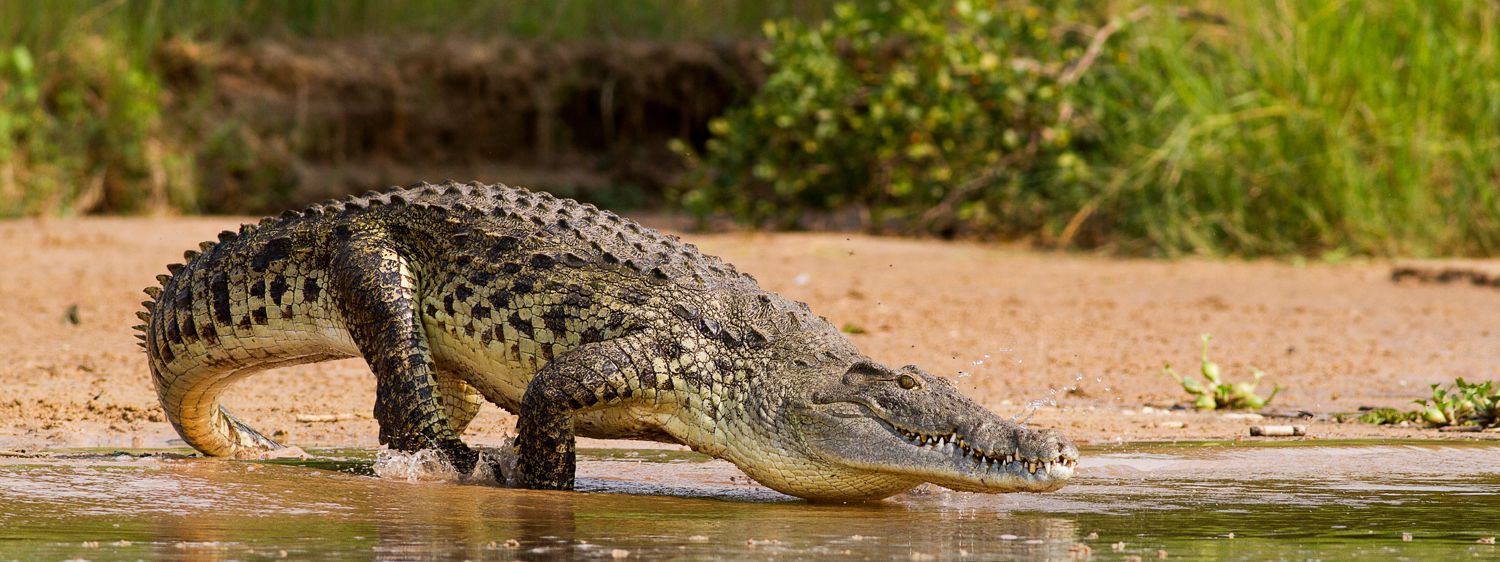Nile crocodiles are the most iconic and fearsome reptiles inhabiting the rivers, lakes, and wetlands of sub-Saharan Africa. With their ancient lineage dating back millions of years, these formidable creatures are known for their sheer size, strength, and incredible hunting prowess.
Nile crocodiles can be found in a wide range of aquatic habitats throughout Africa, including most of the big rivers and their tributaries, as well as lakes, swamps, and estuaries. They are highly adaptable and can tolerate both freshwater and saltwater environments. The dense vegetation along the riverbanks provides ideal nesting sites and ample cover for these reptiles. They prefer water bodies with warm temperatures, abundant prey, and suitable basking spots.
Nile crocodiles are primarily solitary creatures, although they can congregate in large numbers during certain periods, such as breeding or during the dry season when water sources shrink. They are apex predators and have a varied diet, feeding on fish, birds, mammals, and occasionally larger prey like zebras or antelopes that come to the water's edge to drink.
Basking is an integral part of their behavior, as they rely on external heat sources to regulate their body temperature. You can often find them lazily sunning themselves on riverbanks or partially submerged in the water, with only their eyes and nostrils visible. They possess remarkable thermoregulation abilities, allowing them to adapt to varying environmental conditions.
During the breeding season, which typically occurs during the dry season, males engage in elaborate courtship displays to attract females. The dominant males establish territories and defend them vigorously against rivals, displaying their impressive size and strength. Female Nile crocodiles lay their eggs in mound nests constructed from vegetation, which provide warmth and protection for the developing eggs. The females guard their nests fiercely, exhibiting strong maternal instincts.
Nile crocodiles are renowned for their remarkable hunting techniques. They utilize ambush tactics, lying in wait for unsuspecting prey to come within striking distance. With lightning-fast movements, they launch themselves from the water, using their powerful jaws to seize their prey. Their large, razor-sharp teeth and immense jaw strength make them formidable predators capable of overpowering animals many times their size. They often drag their prey into the water to drown it and then tear it apart into manageable pieces using a spinning motion known as the "death roll."
Despite their fearsome reputation, Nile crocodiles also play a vital ecological role. They help control prey populations and nutrient cycling by scavenging and consuming carrion. Additionally, their nesting habits contribute to the fertilization and distribution of nutrients along riverbanks, benefiting the surrounding ecosystem.
However, human-crocodile conflicts do arise, especially when crocodiles come into contact with human settlements or when people venture into their territories. Nile crocodiles are protected in many African countries, and conservation efforts are in place to ensure their long-term survival while minimizing conflicts with humans.



